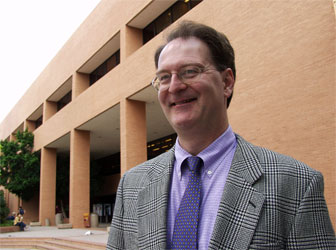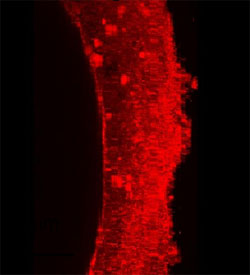Bacteria can ensure clean water say researchers
Bacteria can ensure clean water say researchers
mongabay.com
October 24, 2006
Water is shaping up to be one of the most critical problems facing humanity. With water consumption far outstripping population growth rates due to surging industrial and agricultural demand, the World Bank estimates that 40 percent of the world’s population — more than 2.5 billion people — are enduring some form of water scarcity. In China, where massive river relocation projects to shift water from the south to the dry north are under consideration, an official government survey found that some 300 million Chinese drink unsafe water tainted by chemicals and other contaminants, while 90% of China’s cities have polluted ground water. Elsewhere, development experts say that access to reliable, safe and affordable water is key to poverty alleviation efforts and that addressing declining groundwater supplies and water pollution is be critical to raising the quality of life in poor regions.
 Bruce Rittmann at the Biodesign Center at Arizona State University. |
Still water experts argue that the problem is not a fundamental lack of water — there is in fact plenty of freshwater to go around — but where it’s located and growing levels of pollution. Even in places where water is not scarce, it is often contaminated or “impaired” with natural containments and fertilizer runoff containing nitrates and perchlorate.
While systems exist for dealing with these problems, they typically concentrate compounds and are costly to maintain, especially in poor parts of the world where water is most needed.
This may all soon change. Researchers at Arizona State’s Biodesign Institute have devised a way for bacteria to do the dirty work — converting wastewater to clean drinking water using a minimal amount of energy and generating no harmful waste
Researchers have long known about the existence of organisms that happily take oxidized contaminants and, with the addition of elections as hydrogen gas, reduce them into harmless substances, but delivering hydrogen to the microorganisms in a safe and effective manner has always been the sticking point. Until now.
Bruce Rittmann, Director of the Center for Environmental Biotechnology at ASU’s Biodesign Institute, has devised a way using a membrane biofilm reactor (MBfR) to transfer hydrogen directly to bacteria that convert nitrate into nitrogen gas, perchlorate into chloride ions, and other toxins into harmless forms.
 Biofilm on the surface of a membrane. The membrane wall is to the left. The biofilm is about 50 micrometers thick. |
The system works by passing contaminated water through the MBfR device which is filled with thousands of tiny hollow hair-like fibers. Hydrogen is pumped through the fibers, then diffuses through the membrane to reach the microorganisms growing on its surface as a biofilm. The microorganisms oxidize the contaminants in the water and produce clean water and harmless byproducts. A small version of the device — containing about 7000 fibers — can purify 4-8 liters per minute, removing contaminants including nitrates, perchlorate, arsenate, dibromochloropropane, selenate, and chromate.
Because the MBfR operates at room temperature, produces no toxic waste, and uses little energy, it costs considerably less than existing containment-removal technologies.
Rittmann has partnered with a private sector firm to commercial and scale the technology. He expects a saleable product to be ready next year.
“The strength of the technology is that removes common contaminants without producing any waste,” said Rittmann in his office at the Biodesign Institute. “It has a lot of potential for use in municipal water plants and could even someday, be used at the village level that would otherwise lack the resources to remove these potentially harmful compounds.”
“Society is being forced to use sources of poorer quality, due to pollution of various types and the depletion of high-quality sources. When the water has poor quality, its quality must be upgraded, such as with the MBfR for a range of oxidized contaminants,” added Rittmann.
RELATED ARTICLE
Bacteria can generate renewable energy from pollution, help fight global warming
Currently, most energy production generates carbon dioxide, a potent greenhouse gas that contributes to global warming and local pollution. At the same time that carbon dioxide concentrations are rising in the atmosphere, fueling higher temperatures, burgeoning population growth of humans and livestock is producing ever-increasing amounts of organic pollution and waste. Now researchers at the Center for Biotechnology at the Biodesign Institute of Arizona State University are working on a way to solve both problems using bacteria to convert organic wastes into a source of electricity. Bruce Rittmann, Director of the Center for Environmental Biotechnology at the Biodesign Institute, and his team of researchers are developing microbial fuel cells (MFC) that can oxidize organic pollutants and create electricity from pollution.